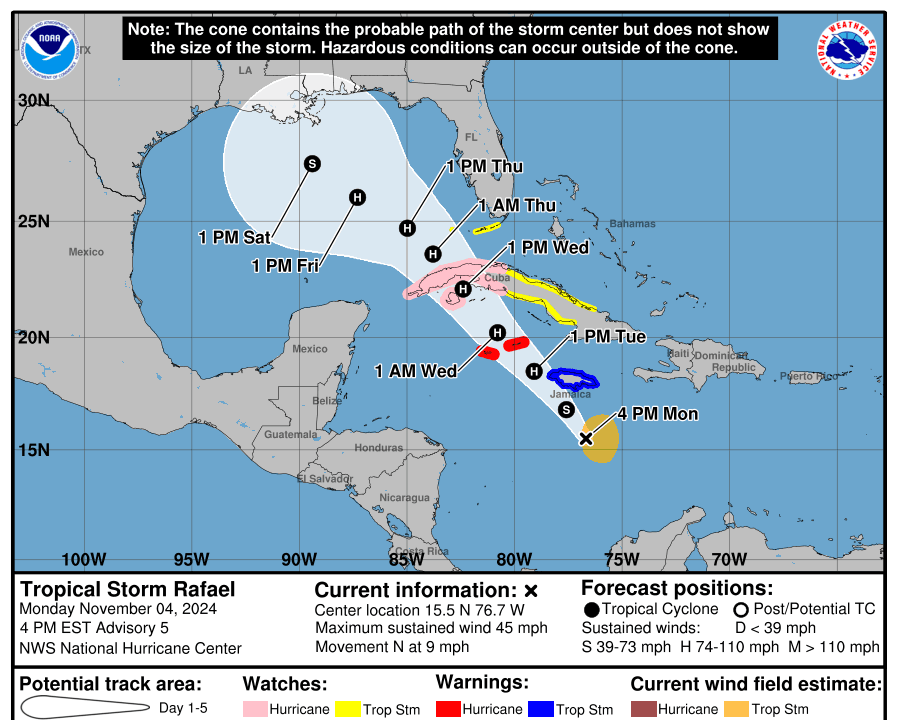Tropical Storm Rafael intensified into a Category 1 hurricane as it moved through the Cayman Islands in the Caribbean on Tuesday, heading toward Cuba, according to the National Hurricane Center (NHC).
The center said the storm could “rapidly intensify” into a Category 2 hurricane before making landfall in Cuba, and then moving toward the Gulf of Mexico.
A hurricane warning has been issued for the Cayman Islands and the Cuban provinces of Pinar del Rio, Artemisa, La Habana, Mayabeque, Matanzas, and the Isle of Youth, according to the advisory.
The government warned of possible damage to power lines and water systems due to the storm but assured residents that it had prepared all the necessary resources.
“As the storm approaches, the public is reminded that expected impacts include damage to infrastructure, property and foliage,” it stated.
The storm could bring hurricane-force winds, flooding in low-lying and coastal areas, occasional lightning and thunder, along with a storm surge of up to 3 feet in the Cayman Islands, the government said.
The department also urged U.S. citizens in Cuba who wish to depart the island to do so immediately and advised Americans to reconsider travel to Cuba due to the potential impact of the storm.
The NHC stated that heavy rainfall will affect Jamaica and the Cayman Islands through Thursday, extending into southern and western areas of Cuba. Rainfall totals are expected to range from 3 to 6 inches, which could lead to flash floods and mudslides. The center also forecasted that rainfall could reach 1 to 3 inches in the Lower Florida Keys.
The center warned that storm surges could raise water levels by 1 to 3 feet above normal tide levels in the Cayman Islands. Water levels are expected to increase by 6 to 9 feet above normal tide levels along the southern coast of Cuba, including the Isle of Youth, on Wednesday.
The NHC also warned of the possibility of tornadoes over the Florida Keys and far southwestern Florida mainland on Wednesday.







